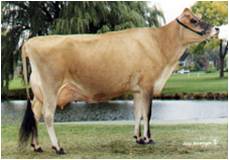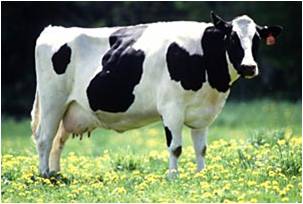How Well Do You Know Your Dairy Farming?

Quiz for year 11 Geography, Dairy farming unit.
- 1.
Extensive Pastoralism has
- A.
Land divided into small blocks
- B.
Excellent road access
- C.
Very large farm holdings
- D.
High output per hectare
- E.
Alot of cheese products
Correct Answer
C. Very large farm holdingsExplanation
The correct answer is "Very large farm holdings." This means that extensive pastoralism involves having farms with a significant amount of land. This is different from small blocks of land, as mentioned in one of the options. The other options, such as excellent road access, high output per hectare, and a lot of cheese products, may be associated with extensive pastoralism but are not the defining characteristic.Rate this question:
-
- 2.
Dairy farming is located in areas which are
- A.
Hilly/rocky
- B.
Lowland/plain
- C.
Central to urban development
- D.
Stoney
- E.
Sandy
Correct Answer
B. Lowland/plainExplanation
Dairy farming is located in lowland/plain areas because these regions provide flat terrain, which is ideal for grazing and cultivating crops for livestock feed. Lowland areas also tend to have fertile soil, access to water sources, and favorable climatic conditions for the growth of forage crops. Additionally, lowland areas are usually closer to markets and infrastructure, making it easier to transport milk and dairy products.Rate this question:
-
- 3.
For a dairy farm to run efficiently it requires
- A.
Cold temperatures
- B.
Close proximity to the sea
- C.
Quad-bikes
- D.
Fertile soils
- E.
Poor acessibility
Correct Answer
D. Fertile soilsExplanation
Fertile soils are essential for a dairy farm to run efficiently because they provide the necessary nutrients for the growth of nutritious and abundant pasture. This pasture is then consumed by the cows, resulting in high-quality milk production. Fertile soils also support the growth of other crops and forage that can supplement the cows' diet. Without fertile soils, the farm would struggle to produce enough feed for the cows, leading to lower milk production and potentially higher costs for purchasing feed from external sources.Rate this question:
-
- 4.
What is a system?
- A.
A model which is used to show how an activity operates, linking interacting phenomena to form a whole
- B.
The distribution of inter-related phenomena in space
- C.
How people view and understand their environment
- D.
A spatial unit defined by a particular phenomena
Correct Answer
A. A model which is used to show how an activity operates, linking interacting phenomena to form a wholeExplanation
A system is a model that is used to show how an activity operates by linking interacting phenomena together to form a whole. This means that a system is a representation or framework that helps us understand and analyze how different elements or components interact and work together to achieve a specific goal or outcome. It allows us to see the relationships and connections between these phenomena and how they contribute to the overall functioning of the activity or process.Rate this question:
-
- 5.
An example of a natural input is
- A.
Water pollution
- B.
Effluent
- C.
Alluvial, free-draining soils
- D.
Calves
- E.
The Farmer
Correct Answer
C. Alluvial, free-draining soilsExplanation
Alluvial, free-draining soils can be considered as a natural input because they occur naturally in the environment and are not created or influenced by human activities. These soils are formed by the deposition of sediments carried by rivers and are characterized by their ability to drain water easily. As a result, they provide a favorable environment for plant growth and are often used in agriculture due to their high fertility and good water drainage properties.Rate this question:
-
- 6.
In a Dairy farming system feedbacks are
- A.
Ouputs which are lost from the system
- B.
Outputs which are used by the system as inputs
- C.
Reports written at each seasonal transition
- D.
The actions done by farmers to turn inputs into outputs
Correct Answer
B. Outputs which are used by the system as inputsExplanation
In a dairy farming system, feedbacks refer to the outputs that are used by the system as inputs. This means that the outputs of the system, such as milk or manure, are utilized as inputs for various processes within the farming system. This feedback loop helps in maintaining the functioning and productivity of the dairy farming system.Rate this question:
-
- 7.
This is a ________ cow
Correct Answer
jerseyExplanation
This is a jersey cow.Rate this question:
- 8.
This is a ________ cow
Correct Answer
friesianExplanation
This is a type or breed of cow called "friesian".Rate this question:
- 9.
Friesian's are good for
- A.
Their wet noses
- B.
Lower fat content, but higher output
- C.
Higher fat content, but lower output
- D.
Cheese and butter making
Correct Answer
B. Lower fat content, but higher outputExplanation
Friesian cows are known for having lower fat content in their milk but higher milk output compared to other breeds. This means that while the milk from Friesian cows may have less fat, they are able to produce larger quantities of milk. This characteristic makes Friesian cows suitable for cheese and butter making, as these products typically require a higher milk yield. The wet noses mentioned in the question are not relevant to the answer.Rate this question:
-
- 10.
This is a ________ milking shed
Correct Answer
rotaryExplanation
This is a type of milking shed called a rotary.Rate this question:
- 11.
In break-feeding
- A.
A change of paddock after each milking allows grass to recover before it is grazed again
- B.
Movable electric fences allow strict control of grazing
- C.
Hay is distributed to cows directly after milking
- D.
Calves are weaned off their mothers milk in portions
Correct Answer
B. Movable electric fences allow strict control of grazingExplanation
Movable electric fences allow strict control of grazing by creating temporary boundaries that can be easily adjusted and moved. This allows for rotational grazing, where animals are moved to different paddocks after each milking. By doing so, the grass in each paddock has time to recover before it is grazed again, ensuring a sustainable and healthy food source for the cows. This method also allows farmers to control the amount of grass consumed by the cows, preventing overgrazing and promoting optimal pasture management.Rate this question:
-
- 12.
An example of a Dairy farming feedback is _________
Correct Answer
manure
profits
replacement stock
hay
silageExplanation
Dairy farming feedback refers to the information or results obtained from the various aspects of dairy farming. This includes the use of manure as a natural fertilizer for crops, which helps improve soil fertility and crop yields. Profits are another form of feedback, indicating the financial success of the dairy farm. Replacement stock refers to the process of replacing older or unproductive cows with younger and more productive ones, ensuring the overall health and productivity of the herd. Hay and silage are important feed sources for dairy cows, providing necessary nutrients and sustenance.Rate this question:
- 13.
Air pollution is an environmental problem caused by Dairy farming
- A.
True
- B.
False
Correct Answer
A. TrueExplanation
Air pollution can be caused by various sources, including dairy farming. Dairy farming contributes to air pollution through the release of methane gas from cow manure, which is a potent greenhouse gas. Additionally, the use of machinery and vehicles in dairy farming operations can also release pollutants into the air. Therefore, it is true that dairy farming can be a cause of air pollution.Rate this question:
-
- 14.
Algal bloom is caused when
- A.
Native flora attempt to attract pollinators
- B.
Farmers stop fertilising their land
- C.
Excess fertiliser is washed into water-ways
- D.
Cows get parasitic infections
Correct Answer
C. Excess fertiliser is washed into water-waysExplanation
Excess fertiliser being washed into waterways is the cause of algal bloom. When fertilisers are used in excessive amounts, they can be carried away by rain or irrigation water, ultimately ending up in rivers, lakes, or other water bodies. These excess nutrients, such as nitrogen and phosphorus, act as a food source for algae, causing their rapid growth and multiplication. As a result, algal blooms occur, leading to the depletion of oxygen in the water, harm to aquatic life, and disruption of the ecosystem.Rate this question:
-
- 15.
A solution to waterway pollution would be
- A.
Use of races
- B.
Use of a feeding pad
- C.
Carp ponds
- D.
Riparian management
Correct Answer
D. Riparian managementExplanation
Riparian management refers to the practice of managing and protecting the vegetation and land along the banks of waterways. This can help to prevent waterway pollution by reducing the amount of sediment, nutrients, and pollutants that enter the water. By maintaining a healthy riparian zone, the vegetation can act as a buffer, filtering runoff and trapping pollutants before they reach the water. This can improve water quality, protect aquatic habitats, and promote overall ecosystem health. Therefore, riparian management is a viable solution to waterway pollution.Rate this question:
-
- 16.
What are two dairy farming regions of the South Island?
- A.
Manawatu and Lower Clutha
- B.
Lower Waitaki and Galatea
- C.
Canterbury and Hauraki Plains
- D.
Taieri and Southland
Correct Answer
D. Taieri and SouthlandExplanation
The correct answer is Taieri and Southland. These two regions are known for their dairy farming activities in the South Island. Taieri is located in Otago and is known for its fertile soils and mild climate, making it ideal for dairy farming. Southland, on the other hand, is the southernmost region of New Zealand and is also known for its extensive dairy farming industry. Both regions have a significant number of dairy farms and contribute to the overall dairy production in the South Island.Rate this question:
-
Quiz Review Timeline +
Our quizzes are rigorously reviewed, monitored and continuously updated by our expert board to maintain accuracy, relevance, and timeliness.
-
Current Version
-
Mar 19, 2023Quiz Edited by
ProProfs Editorial Team -
Mar 17, 2009Quiz Created by
Joannerule
- Chicken Quizzes
- Cuisine Quizzes
- Favorite Food Quizzes
- Food And Drink Quizzes
- Food And Nutrition Quizzes
- Food Handler Quizzes
- Fruit Quizzes
- Health Food Quizzes
- Herb Quizzes
- Hungry Quizzes
- Meal Quizzes
- Meat Quizzes
- Recipes Quizzes
- Rice Quizzes
- ServSafe Quizzes
- Snack Quizzes
- Soup Quizzes
- Spice Quizzes
- Staple Food Quizzes
- Sugar Quizzes
- Vegetable Quizzes





